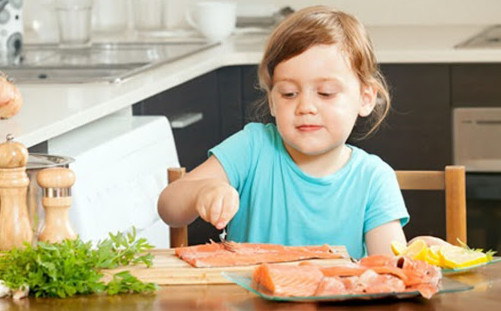Children benefit from fish in what ways?
There are many benefits of fish for children: Fish is a staple food in many civilizations. Fish consumption for children is generally beneficial for their health and nervous system development because it is an important part of their diet. From the age of four to six months, you can begin eating all kinds of cooked fish, which begins in the baby during pregnancy and continues throughout childhood and adolescence.

Fish nutrient content
Fish is low in saturated fat, rich in protein, and contains a number of B vitamins. The omega-3 essential fatty acids in mackerel are similar to those in salmon. In pregnancy, children need this fatty acid to increase their energy levels. Because of its role in promoting brain development and brain health throughout life, many fish contain high levels of vitamin D, calcium and other nutrients the body requires in small amounts.
Children’s health benefits of fish
There was an observational study published in Scientific Reports in 2017 that found fish consumption improved sleep and cognitive ability in schoolchildren, but further research is needed.
Children who eat fish may have a lower risk of asthma, according to a study published in PLOS One in 2013.
According to a preliminary study published in the American Journal of Clinical Nutrition in 2013, children who consume fish twice a month from ages 1 to 12 may have a reduced risk of allergies and related ailments.
Children’s recommended fish intake
The size of fish and seafood portions for children varies according to their age and the following details:
- Children from 2 to 3 years 28 grams
- Children from 4 to 7 years 57 grams
- Children from 8 to 10 years 85 grams
- Children 11 years or older 113 grams
Children-safe fish types
Methylmercury, a heavy metal found in seafood at various levels, should be avoided, but it is preferable to eat seafood that is low in methylmercury and rich in two types of omega-3 fatty acids. List of safe fish to eat There are fish that children can eat and fish that should be avoided completely. Below is a table listing them:
| Fish safe to eat | Fish that a child can eat | Fish to avoid |
| hot fish | A kind of large flatfish | Royal mackerel |
| Salmon fish | tuna fish | Marlin fish |
| sardines | Anchovy | Rough orange fish |
| grouper | Kapoor | shark |
| Spanish mackerel | code | Swordfish |
| shrimp | crab | Gulf or Mexican falafel |
| crab | blue fish | Big eye tuna |
Children and fish
Methylmercury levels are high in some fish. In high doses, it can harm a child’s brain and nervous system development, so the US Food and Drug Administration recommends avoiding sharks, swordfish, mackerel, and eels. Fish; These are large predatory fish that contain the highest levels of mercury. Keeping mercury levels low is recommended by the American Academy of Pediatrics by limiting mercury intake to less than 340 grams per week and eating mercury-free fish. Canned tuna, salmon, cod and other types of low mercury pollution were mentioned earlier.
Fish with bacteria and viruses can cause food poisoning: Make sure fish is thoroughly cooked to kill bacteria and viruses transmitted through food.
A fish allergy occurs more often in adults than in children, and it often develops in childhood, unlike milk or egg allergies during school. The following symptoms occur about an hour after taking it:
- urticaria;
- Skin rash;
- Allergic rhinitis, runny nose.
- Headache;
- Difficulty breathing or asthma.
- Indigestion and stomach pain.
- Burping, bloating or gas.
- diarrhea
- Nausea, or vomiting.


